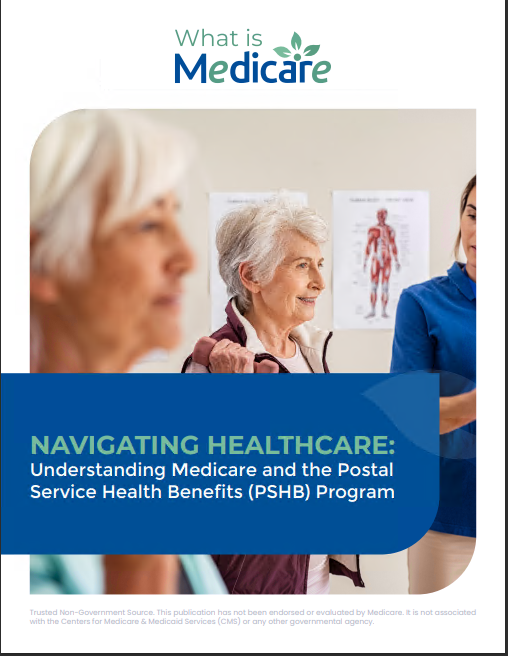Key Takeaways:
- Special Enrollment Periods (SEPs) allow you to change your Medicare coverage outside of standard enrollment windows due to specific life events.
- Understanding the qualifying events and time frames for SEPs can help you maintain continuous and appropriate coverage.
Got Questions About Medicare’s Special Enrollment Period? Here’s What You Should Know
Navigating Medicare can be complex, especially when it comes to enrollment periods. The Special Enrollment Period (SEP) offers flexibility for those who experience certain life changes. This article breaks down what you need to know about SEPs, including when they apply, how to use them, and common scenarios that qualify.
Understanding Medicare’s Special Enrollment Period
A Medicare Special Enrollment Period (SEP) allows you to make changes to your Medicare Advantage or Part D plans outside of the standard enrollment periods. This flexibility is particularly helpful when life events occur that impact your healthcare needs. Unlike the Initial Enrollment Period (IEP) or the Annual Enrollment Period (AEP), SEPs are triggered by specific circumstances such as moving to a new area or losing other health coverage.
Key Times to Use the Special Enrollment Period
The timing for using an SEP depends on the qualifying event. Here are some common scenarios:
- Moving: If you move out of your plan’s service area or to a new location with different plan options, you qualify for an SEP. This period starts the month before you move and continues for two months after.
- Loss of Coverage: Losing other health insurance, such as employer or union coverage, can trigger an SEP. This typically gives you two months to make changes to your Medicare coverage.
- Qualifying for Extra Help: If you become eligible for programs like Medicaid or Extra Help for Medicare prescription drug coverage, you can change your Medicare plan outside the regular enrollment periods.
The Importance of the Special Enrollment Period
The SEP is crucial for maintaining continuous and appropriate coverage. Missing the opportunity to use an SEP can result in gaps in coverage and potential penalties. For example, if you lose your employer-sponsored health insurance, utilizing the SEP can ensure you transition smoothly to a Medicare plan without a lapse.
How Life Changes Impact Your Enrollment Options
Life changes such as moving, losing coverage, or gaining eligibility for financial assistance can significantly impact your Medicare options. For instance, moving to a new state might mean that your current Medicare Advantage plan is no longer available, necessitating a switch to a new plan that services your new area. Additionally, losing employer-based health insurance can leave you without coverage if you don’t promptly enroll in a Medicare plan during your SEP.
Switching Plans During the Special Enrollment Period
During an SEP, you can switch from one Medicare Advantage plan to another, move from a Medicare Advantage plan to Original Medicare, or enroll in a Medicare Part D plan if you don’t already have one. The exact changes you can make depend on the qualifying event that triggered your SEP. It’s important to evaluate your options carefully to ensure that the new plan you choose aligns with your current health needs and budget.
Steps to Apply During the Special Enrollment Period
Applying for Medicare coverage during an SEP involves a few steps:
- Identify the Qualifying Event: Determine which life event qualifies you for an SEP. This could be moving to a new area, losing existing coverage, or becoming eligible for extra financial help.
- Choose Your New Plan: Research and select a new plan that meets your needs. Take into consideration the coverage options, costs, and benefits of each plan.
- Enroll in the New Plan: Contact Medicare or use the online enrollment tools to switch to your new plan. Be sure to complete the enrollment process within the SEP timeframe to avoid any gaps in coverage.
Avoiding Common Pitfalls in Special Enrollment
To make the most of your SEP, avoid these common mistakes:
- Missing Deadlines: Each SEP has a specific time frame. Be sure to act within the allowed period to avoid losing your chance to change plans.
- Not Understanding Your Options: Research thoroughly to ensure you understand all available plans and choose the best one for your needs.
- Ignoring Notifications: Pay attention to any mail or notifications from Medicare regarding changes in your eligibility or plan options.
Tips for Making the Most of Your Special Enrollment Period
Here are some tips to help you navigate your SEP effectively:
- Plan Ahead: If you anticipate a life change that will trigger an SEP, start researching your options early. This proactive approach can help you make informed decisions quickly.
- Seek Assistance: Utilize resources like licensed insurance agents to help you understand your options and enroll in the best plan. Agents can provide valuable insights and help you navigate the complexities of Medicare enrollment.
- Stay Informed: Keep up to date with any changes to Medicare policies or plan offerings that might affect your SEP. Staying informed will help you make the best choices for your health coverage.
Understanding Qualifying Events
Various life events can trigger an SEP. Common qualifying events include:
- Permanent Move: Relocating to a different state or area not serviced by your current plan. This change necessitates a review of available plans in your new location.
- Loss of Other Coverage: Losing employer-based or union-based health insurance. This situation requires prompt action to ensure continuous coverage under Medicare.
- Changes in Medicaid Status: Gaining or losing eligibility for Medicaid can trigger an SEP. This change may offer new options for Medicare coverage that better meet your needs.
- Institutional Changes: Moving into or out of a skilled nursing facility or long-term care hospital. These changes can significantly impact your healthcare needs and the coverage required.
Length of the Special Enrollment Period
The duration of an SEP varies based on the qualifying event. Generally, most SEPs last for two months following the event. For example, if you move, you have two months from the date of your move to make changes to your Medicare plan. Understanding the specific time frame for your SEP is crucial to ensure you take advantage of the opportunity to adjust your coverage.
Available Plans During Enrollment
During an SEP, you can choose from various Medicare plans, including:
- Original Medicare (Part A and Part B): Provides hospital and medical insurance. This foundational coverage is essential for most Medicare beneficiaries.
- Medicare Advantage (Part C): Offers bundled coverage that may include additional benefits like prescription drugs, dental, and vision. These plans are offered by private insurers approved by Medicare.
- Medicare Part D: Standalone prescription drug coverage. Part D plans are essential for managing medication costs.
- Medigap: Supplemental insurance to help cover out-of-pocket costs not covered by Original Medicare. Medigap policies provide additional financial protection and coverage for services not included in Original Medicare.
Utilizing the SEP for Medicare Advantage and Part D
For Medicare Advantage and Part D plans, the SEP allows you to:
- Join a New Plan: Enroll in a new Medicare Advantage or Part D plan. This option is useful if your current plan no longer meets your needs.
- Switch Plans: Change from one Medicare Advantage or Part D plan to another. This flexibility can help you find a plan that better suits your healthcare requirements.
- Drop a Plan: Disenroll from a Medicare Advantage or Part D plan and return to Original Medicare. This choice may be appropriate if you prefer the coverage offered by Original Medicare.
Special Situations and SEPs
Certain special situations provide additional SEP opportunities:
- Dual Eligibility: If you qualify for both Medicare and Medicaid, you can make changes to your Medicare Advantage or Part D plan once per quarter. This flexibility ensures that your coverage remains aligned with your evolving healthcare needs.
- Extra Help: Those who qualify for Extra Help with prescription drug costs can also change their Part D plan once per quarter. This assistance can significantly reduce out-of-pocket expenses for medications.
- Federal Employee Error: If you enrolled in or didn’t enroll in a plan due to a federal employee’s error, you might qualify for an SEP to correct the mistake and select appropriate coverage.
What if You Miss the SEP?
If you miss your SEP, you may need to wait until the next annual enrollment period to make changes to your Medicare plan. This could result in gaps in coverage or penalties, so it’s essential to act within the SEP time frame. Missing the SEP window can lead to significant inconveniences and potential financial penalties, underscoring the importance of timely action.
Maximizing Your Medicare SEP
Understanding and utilizing the Medicare Special Enrollment Period is essential for maintaining continuous and adequate healthcare coverage. By recognizing qualifying events and acting within the designated time frames, you can ensure that your Medicare coverage adapts to your changing needs. This proactive approach will help you avoid gaps in coverage and potential penalties, ensuring that you have the necessary protection and peace of mind.
Contact Information:
Email: [email protected]
Phone: 9165556789










